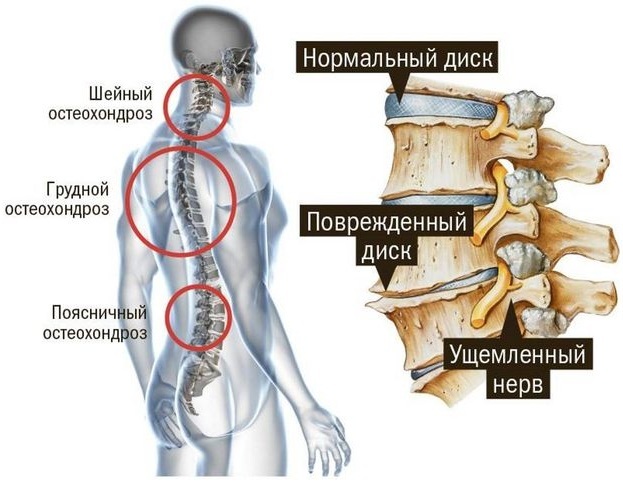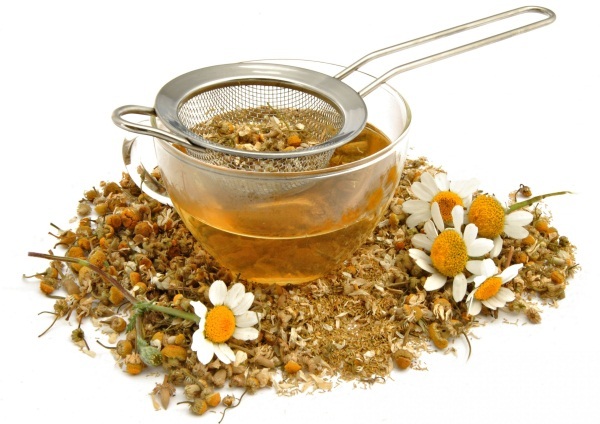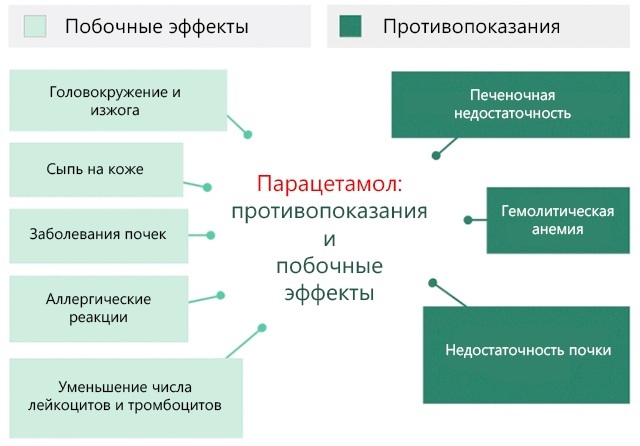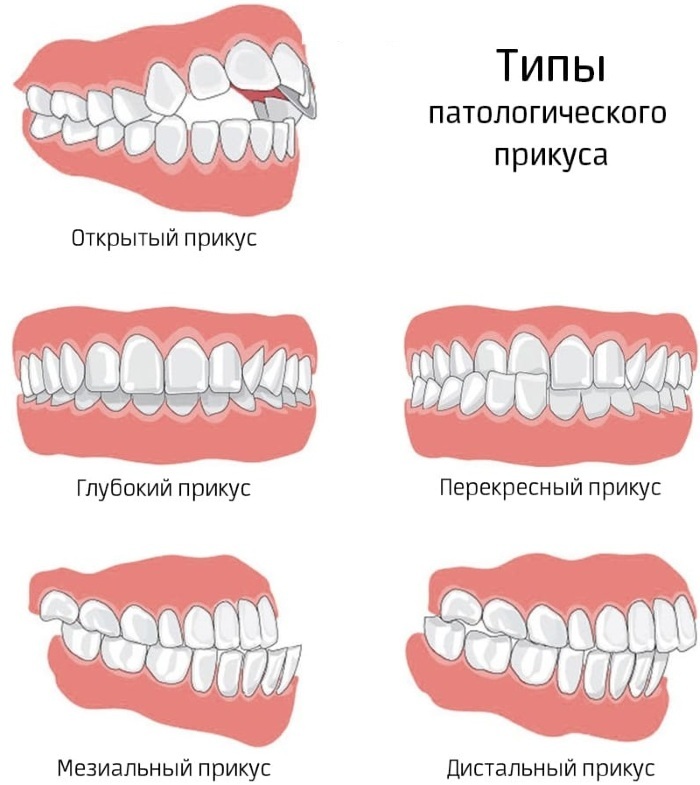Headache in the parietal part of the head may indicate the development of a serious illness. This symptom cannot be ignored. Timely diagnosis of the main cause of the pathological condition will allow starting treatment and preventing negative consequences.
Record content:
-
1 Possible reasons
- 1.1 Pathological causes
- 1.2 External factors
- 2 Diagnostics
-
3 Treatment methods
- 3.1 Drug therapy
- 3.2 Folk remedies
- 4 Potential consequences and complications
- 5 Headache Videos
Possible reasons
Headache in the parietal part of the head can occur against a background of various provoking factors. These can be mechanical influences, pathological processes or negative environmental influences. The physician therapist will help to establish the exact cause by prescribing a comprehensive examination for the patient, taking into account the person's complaints.
Pathological causes
Headache in the parietal part of the head (the causes of the pathological condition will be determined by the doctor and a thorough examination)
often appears against the background of serious diseases that are important to identify at an early stage of development:| Name | Description |
| Osteochondrosis of the cervical spine | Curvature of the spinal column is characterized by pinched nerve endings. The pressure in the blood vessels changes. Pathological changes are accompanied not only by headache, but also by trembling of the upper limbs. Pain syndrome spreads to the neck, shoulders, lower jaw and back of the head.
|
| Infectious and inflammatory process | Headache occurs when the meninges are damaged. Pathological processes also provoke a high body temperature, a spastic state of the muscles in the neck. A secondary symptom of an infectious and inflammatory lesion is signs of intoxication. |
| Tumor | Benign or malignant neoplasms with progression increase in size, put pressure on the brain tissue. Therefore, severe headaches appear in the parietal region. The nature of the attacks depends on the area of localization of tumor processes. The pain can be pressing, unbearable or paroxysmal. Concomitant symptoms are temporary impairment of vision, speech, fainting, and epileptic seizures. |
| Sinusitis | The inflammatory process in the maxillary sinuses creates strong intracranial pressure. There is a constant lack of air. The pathological condition is also accompanied by a paroxysmal headache, weakness, tinnitus, lethargy. |
| Hypertension | The disease is characterized by an increase in blood pressure. Along with painful sensations in the region of the crown, there is noise in the ears, shortness of breath, weakness, nausea, double vision. |
| Cephalalgia | The pathological condition is characterized by frequent headaches, which are the result of old injuries, taking certain medications. The same applies to severe stressful situations when there is a change in pressure in the blood vessels of the brain. |
| Frontal sinusitis | The disease, in which a strong pain syndrome is felt in the forehead and crown, passes to the temples. The attack occurs unexpectedly, is squeezing in nature. Pain syndrome cannot be relieved with analgesics. It intensifies when a person changes body position, when tapping on the forehead or when leaning forward.
|
| Intoxication | A pathological condition that occurs against the background of severe poisoning of the body. Blood vessels constrict as pressure changes in them. There is a lack of oxygen, as a result, there are pulsating pains in the parietal part of the head. The accompanying symptoms are weakness and nausea. Chronic intoxication is accompanied by a convulsive condition. |
All diseases require immediate diagnosis and urgent medical intervention, since they can provoke the appearance of serious complications.
After viral or infectious diseases, a person with a traumatic brain injury in the past may experience complications in the form of painful sensations. With untimely treatment, they acquire a chronic form, periodically disturb the person.
External factors
There are many secondary factors that lead to discomfort and headache. In most cases, it goes away on its own when the person is resting or when the provoking source is removed.
Causes of temporary headache in the parietal part of the head:
- tension pain;
- muscle fatigue;
- professional pain syndrome;
- adverse drug reaction;
- chronic lack of sleep;
- long-term work at the computer;
- chronic overwork;
- severe stress or emotional outburst;
- weather changes;
- improper nutrition;
- lack of oxygen in the room;
- bad habits (abuse of alcoholic beverages, tobacco products, drugs);
- a sharp change in temperature (hypothermia or overheating of the body).

Headache in the parietal part of the head
An improperly fitted pillow or poorly organized sleeping area can also cause pain in the parietal region of the head. The same applies to the use of certain hormonal drugs, strenuous physical activity, a sedentary lifestyle.
Diagnostics
If a person has a headache in the parietal region, the therapist prescribes a comprehensive examination for the patient in order to establish the exact cause of the pathological condition.
Mandatory referral to a specialist is necessary if the syndrome is accompanied by concomitant symptoms:
- coordination is impaired;
- problems with memory and orientation appeared;
- worried about frequent fainting;
- my head is constantly spinning.
The reason for going to the hospital is also the unreasonable jumps in blood pressure and the lack of help with the use of drugs.
Headache in the parietal part of the head (the therapist will help establish the reasons by prescribing a full examination for the patient) requires the following diagnostic measures:
| Name | Description |
| Magnetic resonance imaging (MRI) | The most informative method of examination, during which the doctor detects an aneurysm, tumor or cyst in the brain area in the patient. The pictures will clearly show the area of localization of pathological processes.
|
| Computed tomogram (CT) | During the examination, the specialist carefully examines the cranial structures, bone tissues, blood vessels. CT can also determine the consequences of a traumatic brain injury. |
| General and biochemical blood test | The results of the study will help to identify the development of pathological processes that affect blood parameters. |
| Electroencephalography | A diagnostic method that allows you to assess the condition of the blood vessels and cerebral circulation. |
| Ultrasound diagnostics of the head (USDG) | The blood vessels in the head and neck area are examined. The specialist identifies atherosclerotic plaques in the arteries, their narrowing or abnormal development, against the background of which hypoxia occurs. |
| Rheoencephalography (REG) | The tone and fullness of the blood vessels is assessed. A diagnostic method that helps doctors determine atherosclerosis, vegetative-vascular dystonia, or hypertension. |
| Cerebrovascular rheovasography (RVG) | The study makes it possible to assess the quality of blood flow in the great vessels and collateral circulation. |
| X-ray | A diagnostic method that will allow examining bone structures, revealing the development of pathological changes. |
It is necessary to differentiate the disease in order to find the most effective treatment. Many pathologies are accompanied by similar clinical symptoms. Given the cause of the headache in the parietal region, a person may need to consult other specialized specialists (neurologist, oncologist, otolaryngologist, ophthalmologist, surgeon, traumatologist).
Treatment methods
Headache in the parietal part of the head (the reasons will help to determine the complex diagnosis and the doctor) is treated with complex methods. The specialist takes into account the results obtained after the diagnosis, the accompanying clinical symptoms and the individual characteristics of the human body.
The patient is prescribed medications, it is recommended to change his lifestyle and follow a dietary diet for some time. In complex therapy, you can use folk remedies, if there are no serious contraindications.
Drug therapy
Medicines are prescribed to patients on a case-by-case basis. The dosage depends on the condition of the person and his complaints, as well as on the diagnosis. It is important to take drugs strictly, observing the appointment, since many of them provoke side effects.
| Drug group | Name | Application |
| Antihypertensive drugs | Captopril, Andipal | The medicine lowers blood pressure. The tablets are recommended to be taken on an empty stomach, swallowed whole with water. The adult dosage depends on the condition of the person and ranges from 25-150 mg. The indicated amount of medication should be divided into 3 doses. |
| Pain relievers | Analgin, Tempalgin | The drugs reduce intense pain syndrome. The tablets should be taken orally with a sufficient amount of liquid, 2-3 times a day. Adults are prescribed 250-500 mg. The course of treatment lasts 3-5 days. |
| Non-steroidal anti-inflammatory drugs (NSAIDs) | Ibuprofen, Meloxicam | Medicines reduce pain, eliminate inflammation and swelling of soft tissues. The adult dosage is 400-800 mg 3-4 times a day. The tablets are swallowed whole, washed down with a sufficient amount of water. |
| Muscle relaxants | Mydocalm, Baclofen | The drugs relax the muscles of the head and neck, restore disturbed blood flow and eliminate spastic pains. The dosage and treatment regimen in each case is selected individually. Adult patients are prescribed 150-450 mg per day. The dosage should be divided into 3 doses. The medicine is recommended to be taken with meals. |
| Nootropics | Glycine, Phenibut | The drugs activate the functions of the brain, reduce the negative influence of provoking factors on its work. Adult patients are prescribed 1 tablet 2 times a day. The drug should be taken with meals, kept in the mouth until completely dissolved. The course of treatment lasts 1 month. |
| Antispasmodics | Spazmalgon, Kombispasm | The medicine should be taken 1-2 tablets 2-3 times a day. The course of treatment lasts 3 days. |
| Diuretic drugs | Furosemide, Trifas | Diuretics help remove excess fluid from the body. The dosage depends on the patient's condition and is 0.5-4 tablets 1-2 times a day. |
| Vitamins | Neuromultivitis, Milgamma | The medicine is recommended to be taken orally after meals, with a sufficient amount of water on the capsules. The recommended dosage for adult patients is 1 tablet 1-3 times a day. The course of therapy lasts 4 weeks. |

During the period of treatment, patients should adhere to some of the recommendations of the attending physician:
- completely get rid of bad habits (alcohol, cigarettes);
- moderately engage in physical activity;
- Healthy food;
- observe the regime of rest and work;
- it is necessary to walk more in the fresh air.
If a patient has been diagnosed with malignant or benign neoplasms, a special treatment regimen is selected or surgery is performed.
Folk remedies
Headache in the parietal part of the head (the reasons will help to establish the doctor therapist and a comprehensive examination) in some situations is the result of minor violations. Recipes of healers and healers will help to eliminate it, but in complex therapy and after consulting with your doctor.
You cannot take medications on your own, since the incoming components can provoke an allergic reaction or individual sensitivity.
Effective folk remedies for headaches in the parietal part:

| Name | Recipe | Application |
| St. John's wort | Pour dry grass (2 tablespoons) with hot water (200 ml). Insist the resulting mixture for 1 hour and strain. | A ready-made decoction of St. John's wort should be taken orally before meals for 1/3 tbsp. 2-3 times a day. The medicine helps to stop the pain syndrome. |
| chamomile | Plant flowers (2 tablespoons) pour boiling water (300 ml). Leave for 30-40 minutes and strain. | The resulting product is recommended to be consumed every day, 100 ml. The course of treatment lasts 2 weeks. |
| Herbal collection | Mix in equal proportions lilac, cornflower and thyme. Pour 1 tbsp. herbal collection with hot water (1 tbsp.). Leave for 1 hour and strain. | The medicine is recommended to be taken orally at 0.5 tbsp. 3 times a day. |
| Valerian | Pour the root of the plant (50 g) with hot water (250 ml) and heat in a water bath for 30 minutes. Cool and strain the resulting mixture, add warm boiled water until 250 ml is obtained. | The finished medicine is recommended to be consumed in small sips, 1 portion 3 times a day, mainly before meals. The course of treatment lasts 7 days. |
| Cinnamon | Stir a pinch of cinnamon in hot water (500 ml). Cool slightly and add 1 tsp. granulated sugar. | The resulting solution should be taken orally for 2 tsp. every 2 hours. |

Folk remedies help not only reduce pain, but also increase the body's defenses, improve its resistance to pathological processes. Herbs and other natural ingredients eliminate vasospasm, replenish the supply of vitamins, and also restore the functioning of the central nervous system.
Potential consequences and complications
In the absence of a correct diagnosis and timely therapy, the patient will face serious consequences. It is also impossible to independently take medications and make a diagnosis, since it is possible to aggravate the state of health.
Headache in the parietal part of the head provokes the following complications:
- the development of a hypertensive crisis;
- the appearance of hemorrhage in the brain structures;
- pressure on blood vessels and nerve endings that run between the spinal cord and brain.
Against the background of constant headaches, a vascular crisis appears, memory also deteriorates and concentration of attention decreases. As a result of progressive atherosclerosis, cerebral stenosis will occur.
A headache in the parietal part of the head is not always the result of a serious pathology. A person needs enough rest and sleep to recuperate. But, if the cause is serious, complex diagnostics will be required to determine the provoking factor and treatment to eliminate it.
Headache Videos
Crown headache:



